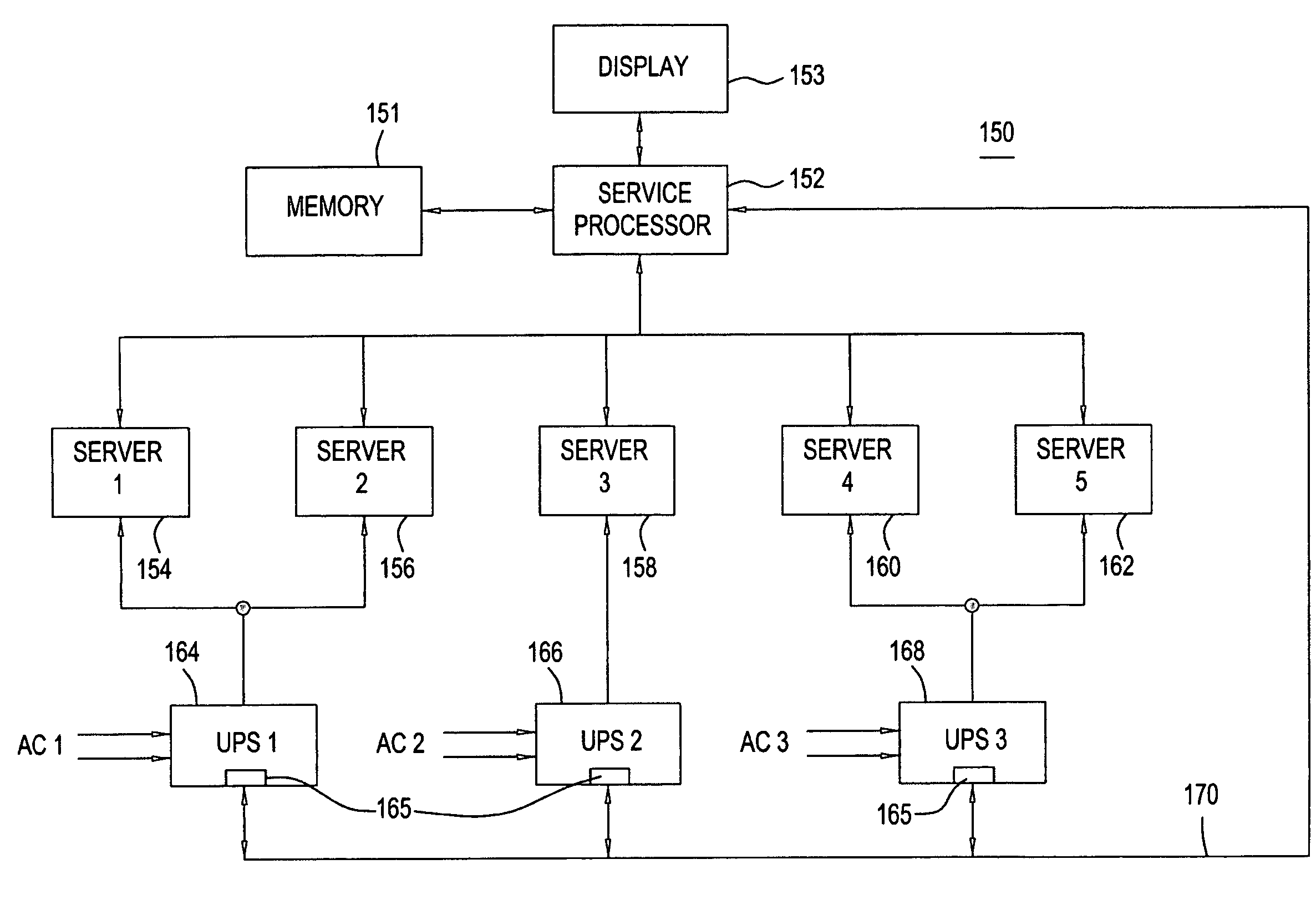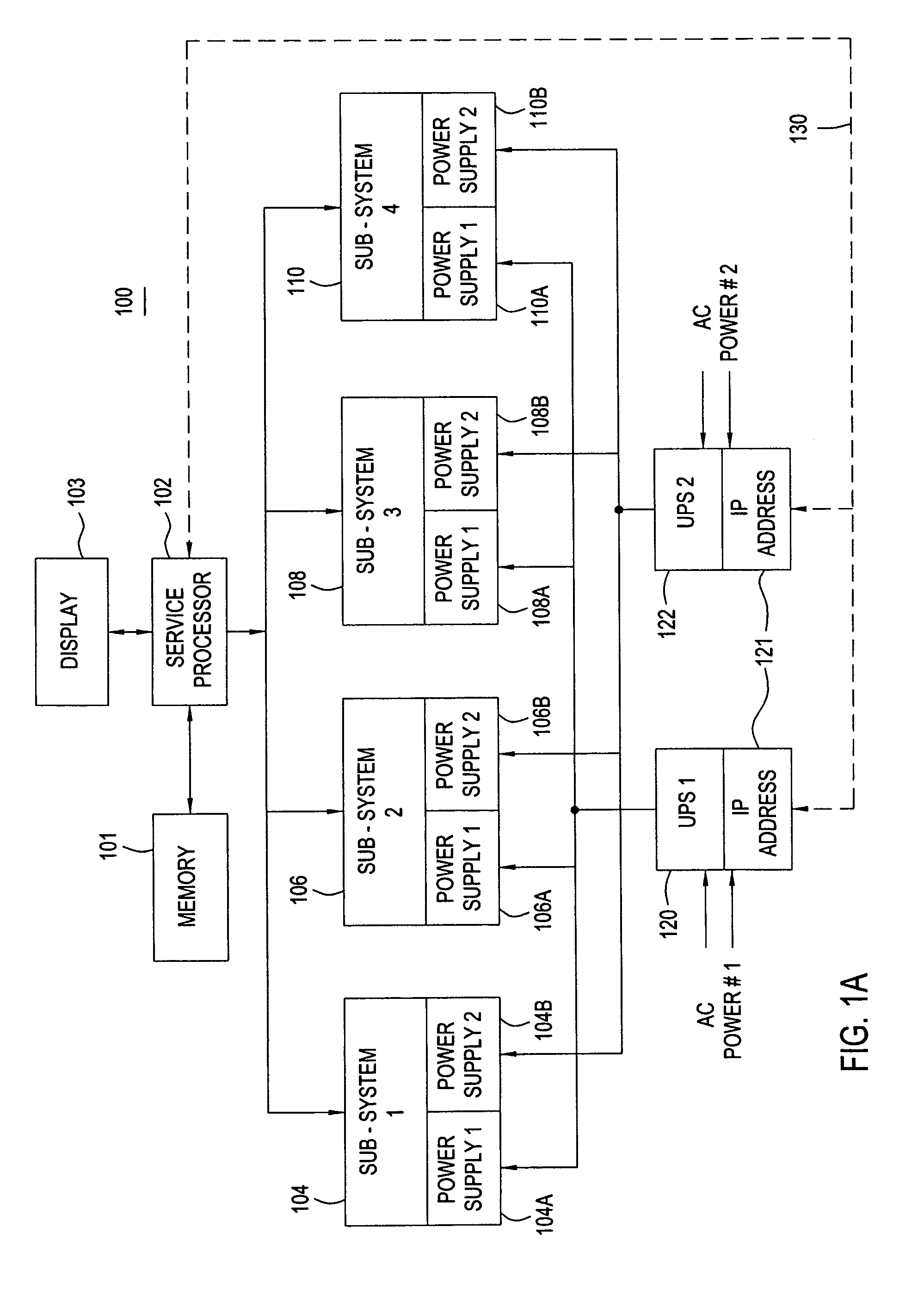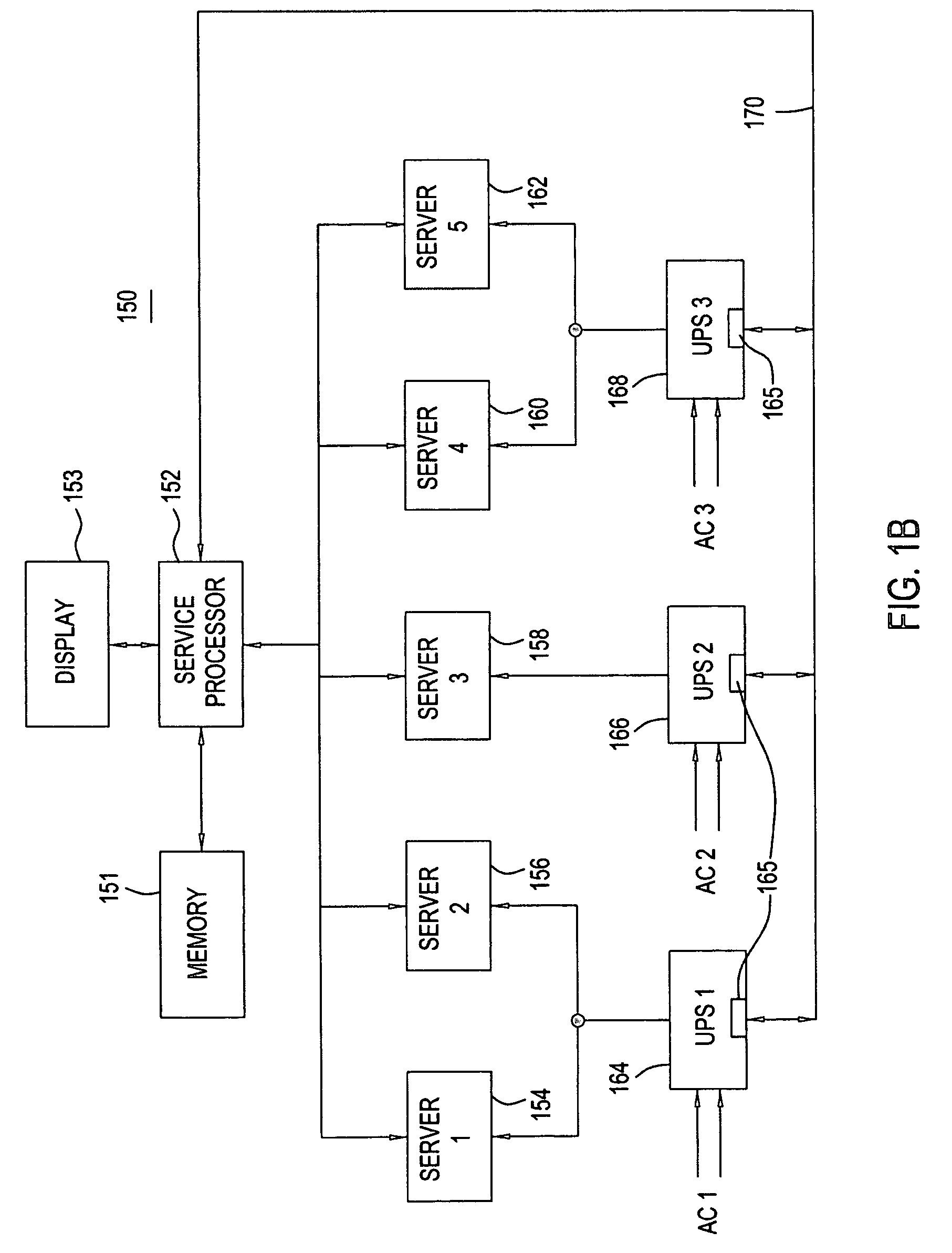Method and apparatus for correlating UPS capacity to system power requirements
a technology of system power requirements and power requirements, applied in error detection/correction, redundancy hardware error correction, instruments, etc., can solve problems such as power company failure, power company failure, and malfunction, and achieve the effect of increasing the reliability of ups protected systems and reliable supply of power
- Summary
- Abstract
- Description
- Claims
- Application Information
AI Technical Summary
Benefits of technology
Problems solved by technology
Method used
Image
Examples
first embodiment
[0025]FIG. 1A is a schematic depiction of a first embodiment high reliability system 100 that is suitable for practicing the present invention. The system 100 includes numerous subsystems, each of which includes a redundant power supply. The system 100 includes a service processor 102 that controls and monitors the overall operation of the system 100. The service processor 102 is operated by software that is stored in memory 101 and that implements the overall purpose of the system 100. As the present invention relates to ensuring the integrity of the system power, part of that software, referred to herein as power micro-code, will be specifically discussed.
[0026]The system 100 includes a plurality of N (an integer) sub-systems, illustrated by the subsystems 104, 106, 108, and 110, each of which includes two power supplies, labeled 104A-104B through 110A-110B. Each power supply can individually power its associated sub-system, e.g., the power supply 106A can completely power the sub...
second embodiment
[0030]FIG. 1B is a schematic depiction of a second embodiment high reliability system 150 that is suitable for practicing the present invention. The system 150 includes a plurality of distributed subsystems which are not all connected to the same UPS system or to the AC input line. As shown, the system 150 includes a service processor 152 that controls and monitors the overall operation of the system 150. The service processor 152 is controlled by software that is stored in memory 151 and that implements the overall purpose of the system 150.
[0031]The system 150 includes a plurality of N (an integer) sub-systems that are illustrated by the servers (1-5), which are identified as server devices 154, 156, 158, 160, and 162. Each server device handles communications with a plurality of users. The server devices 154, 156, 158, 160, and 162 connect to uninterruptible power supplies UPS1, UPS2, and UPS3, which are identified as UPS devices 164, 166, and 168. The UPS device 164 receives its...
PUM
 Login to View More
Login to View More Abstract
Description
Claims
Application Information
 Login to View More
Login to View More - R&D
- Intellectual Property
- Life Sciences
- Materials
- Tech Scout
- Unparalleled Data Quality
- Higher Quality Content
- 60% Fewer Hallucinations
Browse by: Latest US Patents, China's latest patents, Technical Efficacy Thesaurus, Application Domain, Technology Topic, Popular Technical Reports.
© 2025 PatSnap. All rights reserved.Legal|Privacy policy|Modern Slavery Act Transparency Statement|Sitemap|About US| Contact US: help@patsnap.com



